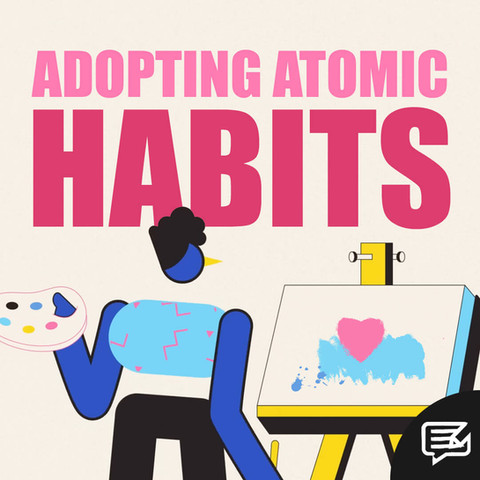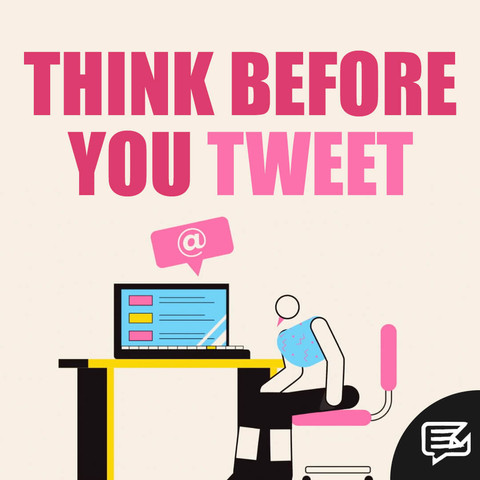
03.04.21
BURNOUT: AN OCCUPATIONAL HAZARD
In October 2020, the Harvard Business Review published an article entitled “What Health Care Can Teach Other Industries About Preventing Burnout”. It’s a topic of particular interest to me. Not just because of my line of work, but due to my own experience of burnout.
Failing to recognise the signs is something I think all of us will be guilty of at least once in our lives. It’s just a headache it will pass… Oh it’s nothing to worry about, I never sleep well… Sorry, what did you say? I zoned out for a moment or two there…



I’m lucky in my role that I work remotely behind a computer screen. The same can’t be said for frontline health care staff – especially during a global pandemic. Not only do doctors, nurses, porters and the like run the risk of contracting the virus, they do so in the face of so many other challenges that office workers would struggle to comprehend. My back aches after thirty minutes of navigating the aisles of a supermarket. The prospect of standing motionless holding a retractor for hours at a time fills me with utter dread.
And yet, that’s the kind of thing medical staff up and down the country do on a daily basis. They put in the long hours, they look after others ahead of themselves. If anything, it’s surprising that burnout rates for health care staff aren’t closer to 100%.
Instead, burnout rates were reported by the Harvard Business Review to be approaching the 50% mark:
“With 100+ hour weeks common throughout training, treating work as the only priority was seen as a badge of honor. (The common joke in surgical training goes: What’s the problem with being on overnight call every other night? You miss half the surgeries.) However, increased recognition of the negative impact of these draconian schedules on personal health, mental wellness, and patient safety, combined with pressures from the Occupational Safety and Health Administration (OSHA), resulted in internally enforced work-hour restrictions and the emergence of wellbeing programs.
“These changes have paralleled a wider movement in medicine seen in the greatly increased number of burnout-related publications. In 2003, 307 scientific articles with the term 'burnout' were indexed by the National Library of Medicine. By 2009, that number was 560; by 2019, it was 2,137.
“This newfound interest led to two pivotal developments in various health care organizations: 1) increased measurements of wellbeing, including both drivers of distress (organizational leadership, lack of professional fulfillment, low engagement) and its sequelae (burnout, turnover, medical errors); and 2) structural changes that included the creation of formal wellbeing programs and the hiring of chief wellness officers.”
The article continues:
“In recent years, the health care sector has become increasingly aware of the drivers of burnout beyond long work hours. For example, the ability to engage in work that health care providers find most meaningful for just 20% of the week appears to protect against burnout.
“With this in mind, many physician wellbeing programs are incorporating professional development into their arsenal of initiatives to prevent burnout and consider professional fulfillment as a primary outcome. As a result of these multifaceted efforts, recent large multi-specialty national studies point to an overall decrease in physician burnout and an improvement in work-life-integration in recent years.”
It makes sense. If I were in a position to dedicate 20% of my working week to the projects I found most meaningful and fulfilling, I’d feel all the better for it. Recalibrate the split to 10% / 90% and I’d begin to feel overwhelmed. At 5% / 95%, I’d be wondering what the point of it all is. And my day job is sat at a desk.
For doctors and nurses on the COVID wards, such disproportionate ratios would surely have catastrophic consequences on both their physical health and mental wellbeing.
A successful wellbeing programme relies on a solid infrastructure - one where interventions are both reactive and proactive. Prevention is better than cure, as the adage goes, especially when the lasting effects of burnout impact far more than just your ability to work. The Harvard Business Review suggests establishing wellbeing as an organisational priority akin to optimising finances and operations, as well as creating space for it at the decision-making table. The article further points to the importance of an organisational framework:
“As with all strategic endeavors, a clear vision for success requires a framework and guiding principles. In our institution, the use of the professional fulfillment model has helped shape our goals, initiatives, and establish organizational alignment by delineating three core wellbeing priorities. However, other frameworks, such as the Job Demand-Control-Support Model or internally developed alternatives, can be implemented.”
The professional fulfilment model in question was shared by Stanford Medicine in 2016, with the three “wellbeing priorities” listed as:
1. Culture of Wellness
Organizational work environment, values and behaviors that promote self-care, personal and professional growth, and compassion for ourselves, our colleagues and our patients.
2. Efficiency of Practice
Workplace systems, processes, and practices that promote safety, quality, effectiveness, positive patient and colleague interactions, and work-life balance.
3. Personal Resilience
Individual skills, behaviors, and attitudes that contribute to physical, emotional, and professional well-being.
The key success factors for Personal Resilience include:
Self-care assessment and support systems
Safety net systems for crisis interventions
Worksite evidence-based health promotion
Encouragement of peer support
Financial management counseling
Life-needs support mechanisms (e.g. Child and Elder Care, After hours meals etc.)
My concern is how such measures work in practice. Not through lack of effort or inclination “from the top” (although this will undoubtedly be the case in many a toxic workplace), but through a lack of uptake. I know from experience that asking for help is hard. And it doesn’t get any easier.
Only a generation or so ago, Brits talked of a “stiff upper lip” as if it were a badge of honour. Speaking to a therapist about your thoughts and feelings was seen as a weakness, or something “only Americans would do”. Indeed, in 2010 there were only 127,600 therapists in the UK. In 2020, that number had risen to 211,300.
But times are changing. With each passing day, the stigma around mental health is waning and more and more sufferers are seeking professional help. According to the NHS:
“1.60m referrals were made to talking therapies for anxiety and depression in England during 2018-19 – up 11.4% from the previous year (1.44m in 2017-18).
“1.09m referrals started treatment during 2018-19, which is an increase of 8.3% from 1.01m in 2017-18.”
But burnout doesn’t just pertain to mental health.
“Burnout” as a term was first coined in 1974 by Herbert Freudenberger in his book “Burnout: The High Cost of High Achievement”. According to Verywell Mind, Freudenberger originally defined burnout as “the extinction of motivation or incentive, especially where one's devotion to a cause or relationship fails to produce the desired results.”
Nowadays, occupational burnout is considered to be “a reaction to prolonged or chronic job stress and is characterized by three main dimensions: exhaustion, cynicism (less identification with the job), and feelings of reduced professional ability.”
Verywell Mind highlights four common signs of burnout to watch out for:
1. Alienation from work-related activities
Individuals experiencing burnout view their jobs as increasingly stressful and frustrating. They may grow cynical about their working conditions and the people they work with. They may also emotionally distance themselves and begin to feel numb about their work.
2. Physical symptoms
Chronic stress may lead to physical symptoms, like headaches and stomach aches or intestinal issues.
3. Emotional exhaustion
Burnout causes people to feel drained, unable to cope, and tired. They often lack the energy to get their work done.
4. Reduced performance
Burnout mainly affects everyday tasks at work—or in the home when someone's main job involves caring for family members. Individuals with burnout feel negative about tasks. They have difficulty concentrating and often lack creativity.
A 2018 report by Gallup pointed to five main causes: unfair treatment at work, unmanageable workload, lack of role clarity, lack of communication and support from manager, and unreasonable time pressure. Their study of nearly 7,500 full-time employees found that 23% of employees reported feeling burned out at work very often or always, while an additional 44% reported feeling burned out sometimes.
Gallup’s accompanying article explains:
“Although burnout has become "just part of the job" for many workers, the hard organizational cost of burnout is substantial: Burned-out employees are 63% more likely to take a sick day and 2.6 times as likely to be actively seeking a different job. And even if they stay, they typically have 13% lower confidence in their performance and are half as likely to discuss how to approach performance goals with their manager.
“In short, employee burnout can trigger a downward spiral in individual and organizational performance.
“And not surprisingly, the effects of burnout don't stop at the office door. Employees who consistently experience high levels of burnout are two times more likely to strongly agree that the amount of time their job takes makes it difficult to fulfill their family responsibilities. Even scarier, burned-out employees are 23% more likely to visit the emergency room.”
Thankfully, help is at hand. Not only are more and more organisations taking an active role in monitoring and improving employee wellness, but there are more “at-home” remedies than ever before.
Take this list of helpful technology, compiled by Thrive Global. Three suggestions stood out for me:
1. ASMR Videos
Autonomous Sensory Meridian Response videos use audio-visual induced sensation that helps you relax and unwind. You can even listen to them if you have difficulty falling asleep. You can easily access such relaxing videos by generating a QR code for it and make it portable.
2. Personal Zen
This is another free app that helps you shift into a positive state of mind. The effectiveness of the app has been proven with the help of clinical studies. The app helps you reduce feelings of stress and anxiety by offering game-like activities. The game forces you to ignore negative stimuli and focus on the non-threatening and positive scenarios.
This game works on a principle called Attention-Bias Modification Training, where you avoid negative stimuli training your brain to avoid negative emotions and focus on everything that’s positive. You just have to play this game a few times a week for its effect to eventually show.
3. Urban Mind
This app helps you understand your state of mind and how different environments affect your mental state. The app assesses how you are feeling based on questions like where are you and how you are feeling.
It will then understand what environments make you feel stressed, anxious, sad, or happy. The app asks you a list of questions relating to your current surroundings, activity and how you’re feeling. The app makes a detailed report for you after two weeks so you can understand your state of mind better.
And if those don’t work, you can always go back to basics by prioritising the three core needs we all share: sleeping, eating and moving. Mandatory siestas? Now there’s a corporate policy I could get on board with…

























































